The editor surrenders arms in his long battle against the tactical forces
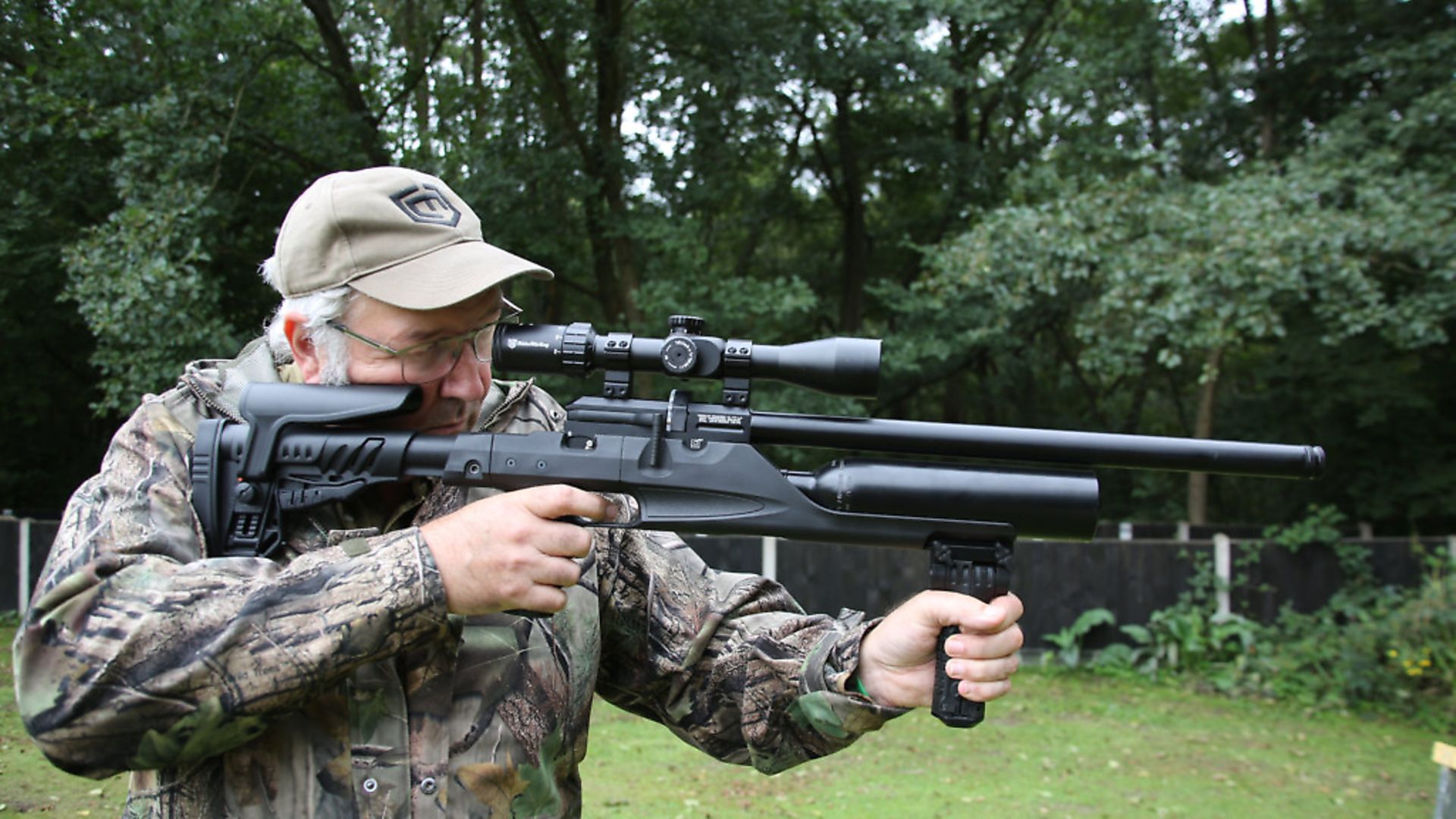 credit: Archant
credit: Archant
It’s been many years since I first expressed my bewilderment about the whole ‘tactical’ thing. Truth to tell, I’m still none the wiser about the meaning of that word, but I’m fully clued-up about what it represents as far as air rifles go, at least. These invariably black, militaristic, often omni-adjustable airguns are here to stay, and it’s way beyond time that we traditionalistas stopped giving them the skunk-eye and judged them fairly.
My own past encounters, steeped as they were in a shameful cocktail of prejudice, preference and unprofessional snobbery, always resulted in my coming away with a grudging admiration for what the tactical hardware did, rather than what I believed it was. That all stops, right here, right now. Henceforth, I’ll do what I’m supposed to do, and assess all rifles on merit, while leaving the personal preference stuff to you. That’s the plan, anyway, let’s see if I can stick to it. Here goes.
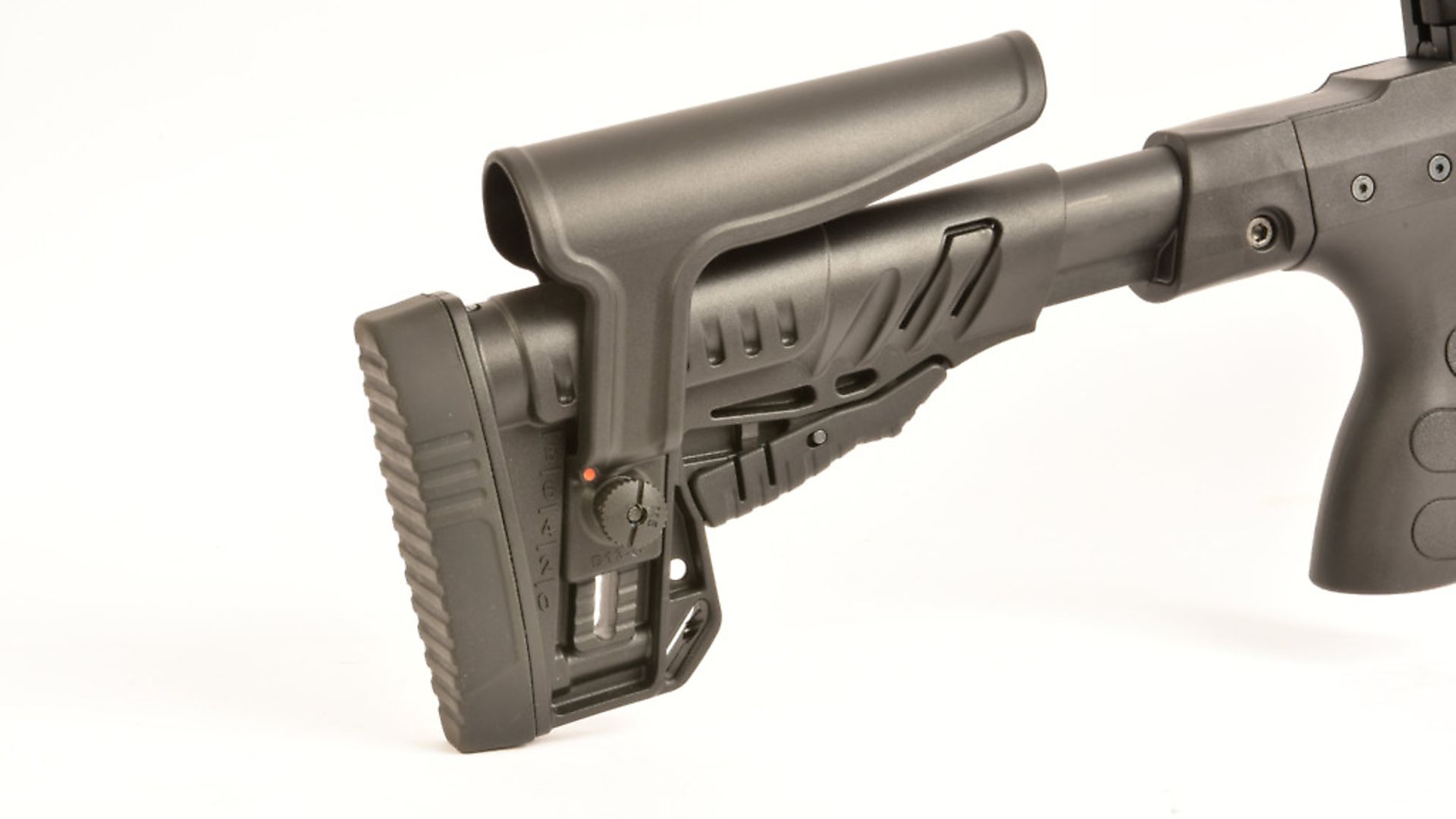 credit: Archant
credit: Archant
Name and shame
Plan or no plan, I absolutely hate that name and I’ll restrict its use as much as possible throughout this review. I loathe ‘text-speak’ in all its forms and regard it as a creeping curse on our glorious language. Yes, I’m old and I work with words, but having seen with my ancient eyes a CV to this office containing the phrase ‘I like 2 chill with my m8s’, I believe my hatred is justified. Names don’t put vermin in the bag, so let’s get to the things that do, beginning with a run-down of this new Webley’s main features.
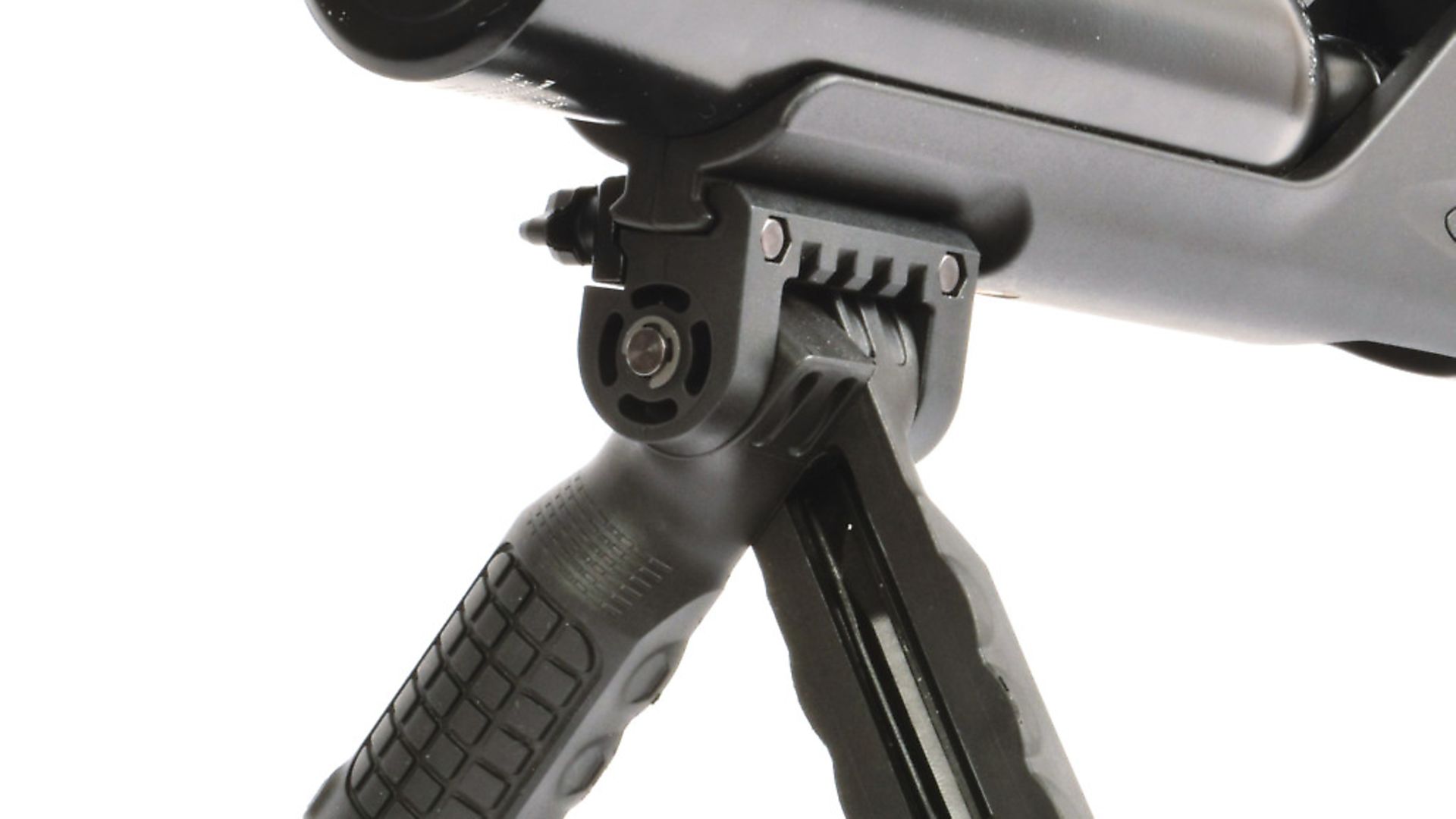 credit: Archant
credit: Archant
The Webley En4cer 12
What I have here, is a sidelever-operated pre-charged pneumatic rifle, that runs a 14-shot, .177 or 12-shot in .22 - removable rotary magazine, two of which are supplied, along with a single-shot tray. The floating barrel is fully shrouded and that shroud incorporates Webley’s celebrated Quantum silencer system, so it’s not just there to score style points. The shroud also comes ready threaded for a moderator, if shooting as quietly as possible is your priority.
At the front of the action sits a 425cc buddy bottle, which when charged to 200 bar via the probe port in the rifle’s underside, will provide at least 160 shots at 11-plus ft.lbs. in .177, the calibre of the test rifle. For reasons that escape me, I decided to charge the test rifle, from almost empty, with a manual pump. Don’t do this. It’s a silly thing to do, unless you are one of those weirdos who actually enjoy perspiring, light-headedness, and breathing with a rasping sound. Use a diver’s tank and take 20 leisurely seconds to fully charge that buddy bottle.
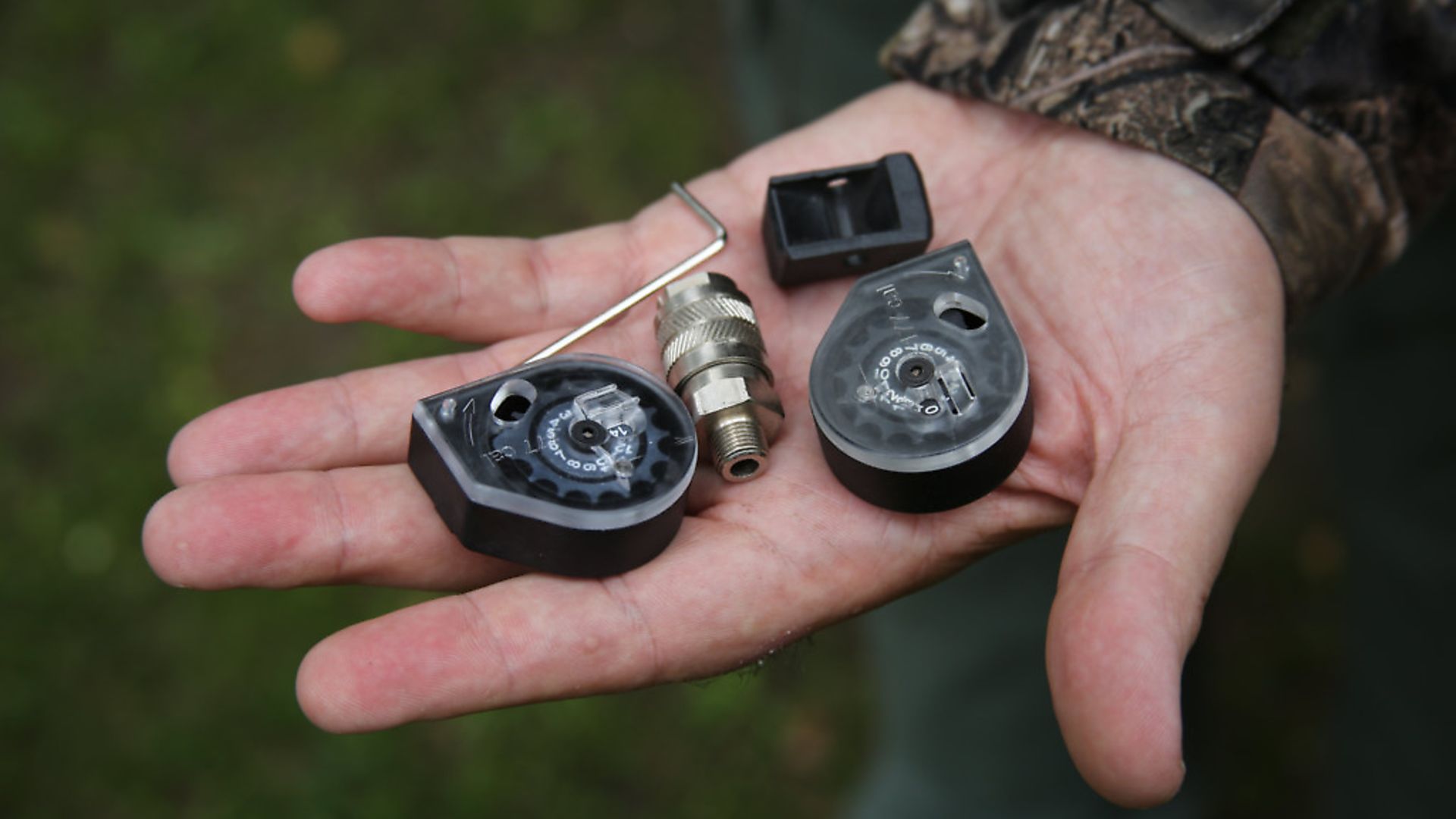 credit: Archant
credit: Archant
Remarkable stock
Part of my rehab from sneering snob to professional airgun assessor, is a full appreciation of the type of adjustable stock fitted to the test rifle. As one who bangs on relentlessly about the importance of gun fit, and how it’s the single greatest advance available to us, today, I really should have elevated such a positive feature far more than I have. Well, I am now, and I have no hesitation in declaring this Webley’s synthetic stock ‘an extremely useful thing, indeed’.
At the squeeze of a lever, the rifle’s pull-length can be changed from 13 inches to 16, and all points between. This feature also makes the rifle more compact – 37 inches long, rather than its full 40 inches – should you opt to transport it in a case other than the padded hard case supplied.
Twisting a finger-friendly locking knob allows the cheek piece to rise and fall over a full two inches, and combined with the adjustable pull-length, gun fit, incorporating optimum head/eye/scope alignment is pretty much a given. Ideally, that fat rubber butt pad would shift, too, but even with it fixed, I had no problem accommodating a variety of odd-shaped shooting chums. Make no mistake, this rifle’s hi-impact synthetic stock is a highly practical plus.
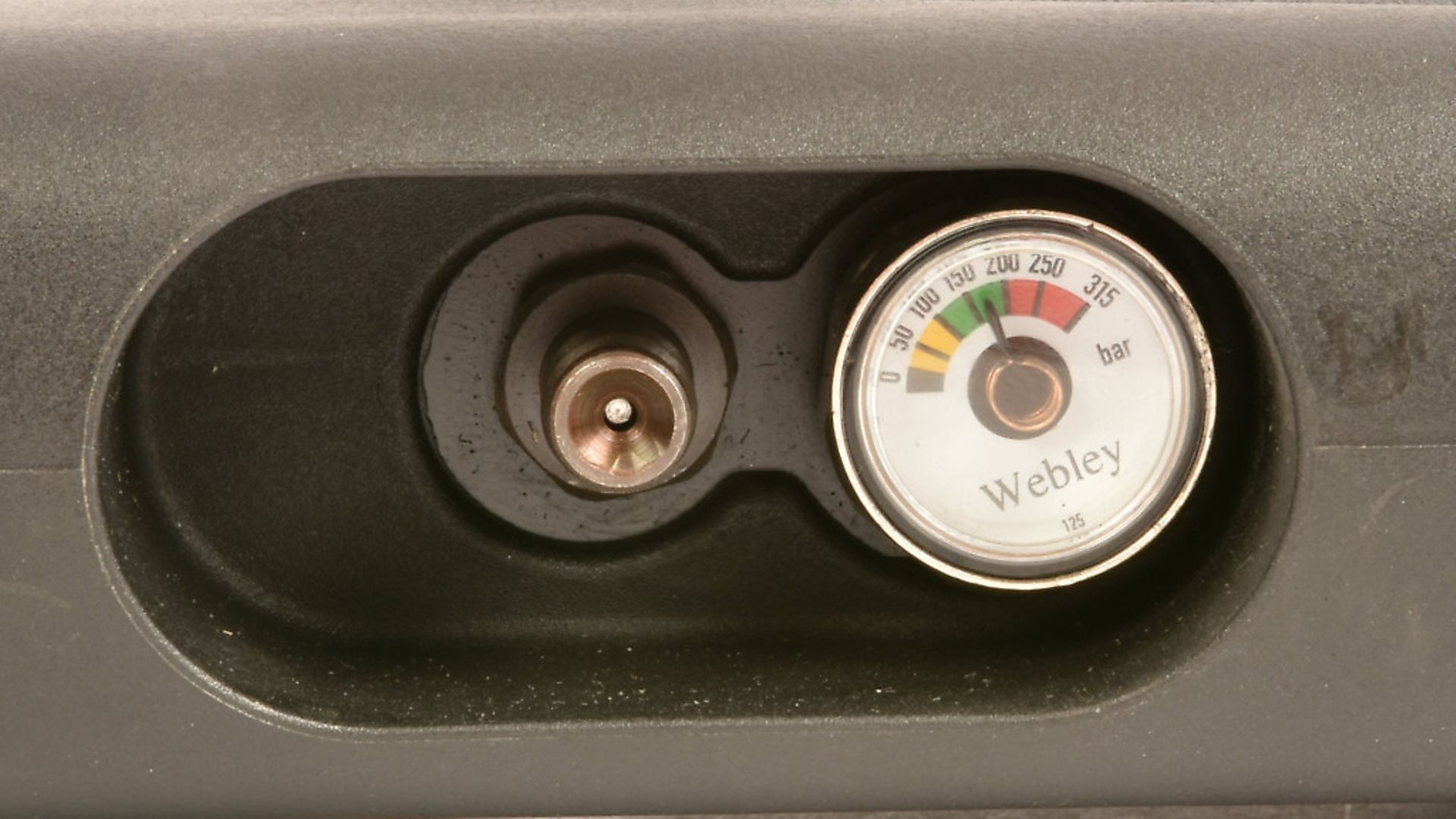 credit: Archant
credit: Archant
Get a grip
I might not be naturally tactical, but I do love a gadget, and supplied with the test rifle was an extremely clever added extra. It’s a detachable drop-down grip that doubles as a bipod. I used it in bipod mode throughout the bench-testing phase of this review, and most handy it proved to be. It’s not an instant-fit sort of attachment, but it’s definitely worth having and I found myself exploring its effectiveness as a fore grip as well as a bipod. As range time passes, I find myself veering uncomfortably toward the tactical on this one. Best move on.
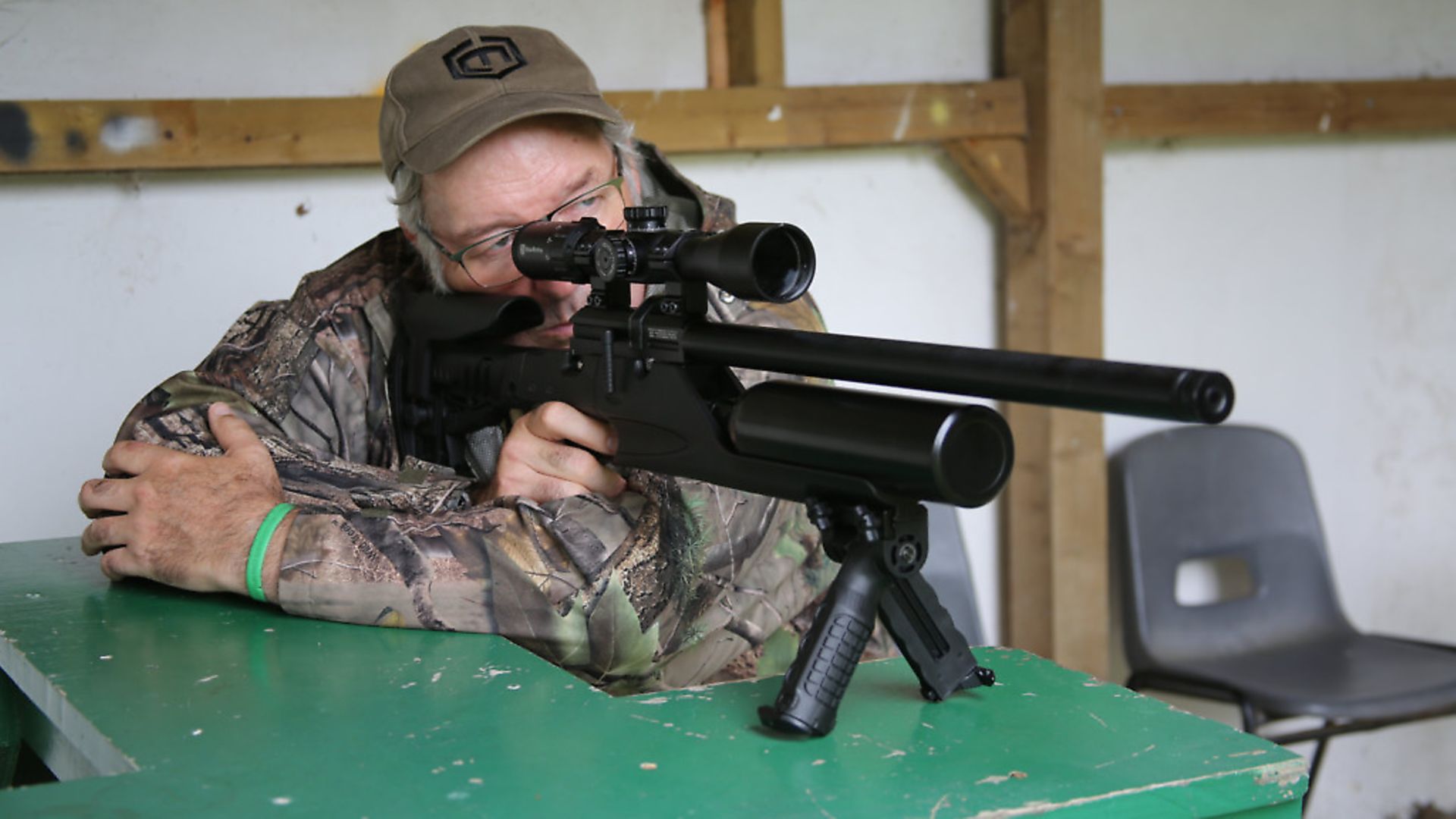 credit: Archant
credit: Archant
Get ready
Charging this rifle is, as stated, as easy as plugging in a push-fit adaptor could possibly be, with the bonus of an on-board pressure gauge right there next to the inlet port. Personally, I always go by the gauge on the tank, but there’s no harm in having something else to keep you informed of your rifle’s state of charge.
Once charged, the next job is to load the magazine and, as always, this takes far longer to describe than to carry out. Simply tension the magazine’s internal drive-spring by rotating the clear cover in the direction of the embossed arrow, then holding it in place to load the first pellet, nose-first. You can now release the cover, moving it round a chamber at a time to fill the mag’ with pellets.
With the sidelever open and the safety catch applied, the loaded magazine can now be slipped into the breech slot, ‘backwards’, rounded end first, until its vertical face lines up flush with the face of the breech block. Close the sidelever, release the safety, and the Webley is ready to shoot. It’s really no bother, I promise.
On the range
This rifle shoots to the accompaniment of a ‘boingy’ firing valve, which will annoy the tech-heads out there, at least until they see how closely the pellets are grouping. I took the test rifle to my father’s back garden, where I’d spent years shooting at targets at 37 yards, and setting up on Dad’s vintage Black & Decker Workmate, I propped the rifle on a bag of compost and shot a series of 15 to 18mm diameter groups. I could have used the grip-bipod, but this was how I tested my rifles when I was learning the trade, so I wanted to see what the passage of time and the tide of technology had brought to my sport.
Beyond compare
There’s simply no comparison. My 86 year-old father could punch out sub-20mm groups with the En4cer, seamlessly cocking and loading the action with a smooth, back-forth of its side lever. ‘Too easy, really,’ he remarked, but qualified it with, ‘any rat near the chickens wouldn’t stand a chance, would it?’ My dad claims a fair few rats and squirrels with the HW95 I got him one Christmas, so I’ve no doubt he’d nail anything vermin-shaped with a recoilless, multi-shot, noise-suppressed sporter, with a crisp, creep-free, adjustable two-stage trigger. To see if that’s the case, I’ll be leaving the test rifle with him for a week or so, and I know he’s already re-zeroed it to be shooting dead-on at 28 yards, which is the distance from his bedroom window to the hen house. He’ll leave the garden light on, rest the Webley on a cushion on the windowsill, and enjoy a happy vigil waiting for a rat.
Initial verdict
I’ll report on how Dad does with the test rifle next month, but as things stand, I’m ready to give my own early verdict. First, that stock adjustability really works. I tweaked the settings throughout this test, because my contact with the rifle changed slightly as I naturally found the best way to hold it. This is an important point for all adjustable stocks, actually; don’t just ‘set and forget’ them. Keep testing to ensure that you’re not adapting to the settings. It absolutely must be the other way round. In fact, this subject is so important, I’ll be doing a feature on it in the next issue, so look out for that.
Shot-to-shot
The test rifle isn’t the most consistent PCP I’ve ever used, with an initial shot-to-shot variation of 18 f.p.s. over the first 50 shots. That said, at responsible hunting ranges, that variation made absolutely no practical difference, with sub-20mm groups as standard at 40 yards, wind permitting. As I write, that variation has settled to 15 f.p.s., as the Webley’s action ‘runs in’, and I would have total confidence in using this rifle in the hunting field.
It’s not the quietest sporter, either, but an additional stubby silencer on the threaded muzzle of its shroud would sort that. I wouldn’t bother, though. This rifle is plenty quiet enough for me and my hunting requirements.
Weight and balance
At 8.4lbs, including scope (7.2 without), the En4cer is just about the ideal heft for stability on the shot, without feeling like you’re dragging an anvil around in the field. I’m still working with the add-on front grip/bipod, but I can see it earning its keep.
Overall, at a shade under £530, including two magazines and that handy add-on, plus a hard case, the Webley En4cer represents great value for money, and I understand the order books are filling rapidly. This is a functional, practical, highly effective hunting rifle, and I’m pleased I can now appreciate it fully – because that’s what it deserves.
Specification
Model: En4cer 12
Manufacturer: Webley
Country of origin: UK/Turkey
Type: Pre-charged pneumatic, multi-shot, sporter
Calibre: .22, .177 Cocking/loading: Sidelever and supplied single-shot tray
Loading: Via removable, rotary 12 or 14-shot magazine
Trigger: 2-stage, adjustable
Stock type: Ambidextrous black synthetic, adjustable for pull-length and comb height
Weight: 3.3kg (7.2lbs) rifle only
Length: 940mm (37ins) to 1016 (40ins)
Fill pressure: Max 200 bar
Shots per charge: 180 in .22, 160 in .177
Variation over first 50 shots: 15 fps for .177 on test
Average energy: 11.1 ft.lbs.
Contact: Webley at webleyandscott.com
Tel: 01785 859122
RRP: £529
Visit the Webley & Scott website here.